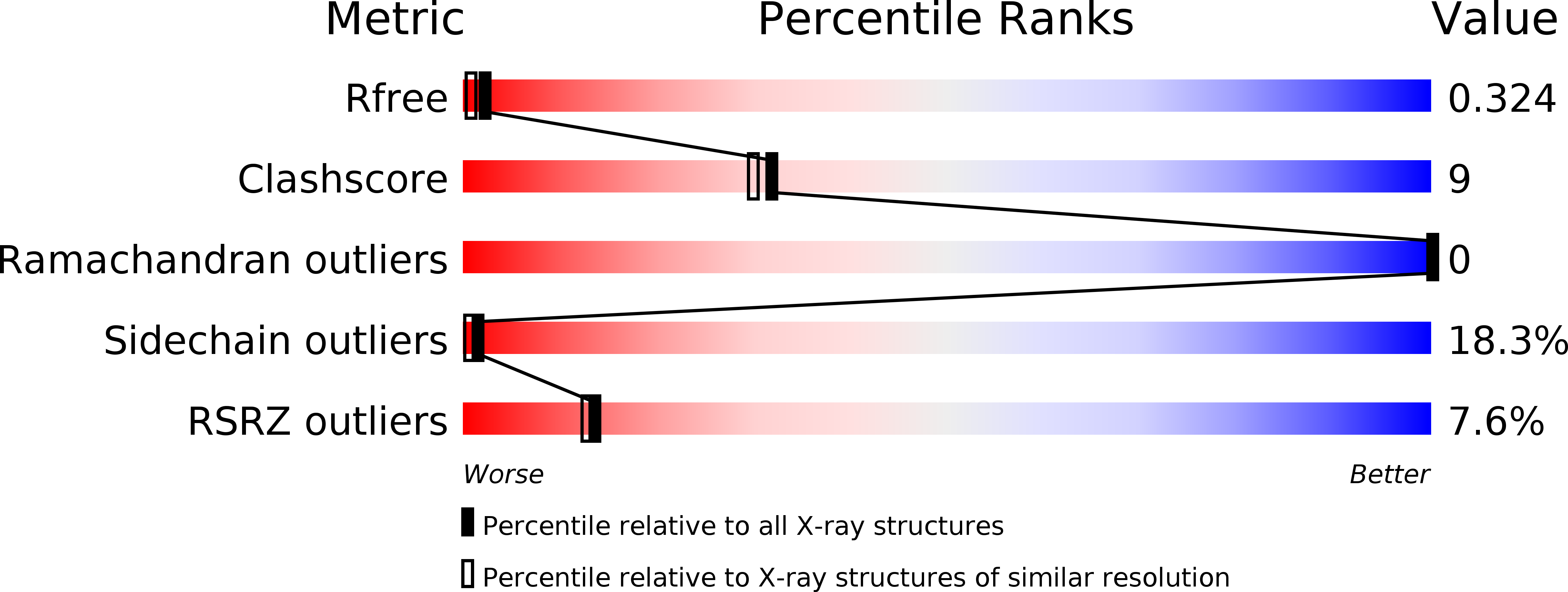Crystal structure of the central coiled-coil domain from human liprin-beta2
Stafford, R.L., Tang, M.Y., Sawaya, M.R., Phillips, M.L., Bowie, J.U.(2011) Biochemistry 50: 3807-3815
- PubMed: 21462929
- DOI: https://doi.org/10.1021/bi200141e
- Primary Citation of Related Structures:
3QH9 - PubMed Abstract:
Liprins are a conserved family of scaffolding proteins important for the proper regulation and development of neuronal synapses. Humans have four liprin-αs and two liprin-βs which all contain long coiled-coil domains followed by three tandem SAM domains. Complex interactions between the coiled-coil and SAM domains are thought to create liprin scaffolds, but the structural and biochemical properties of these domains remain largely uncharacterized. In this study we find that the human liprin-β2 coiled-coil forms an extended dimer. Several protease-resistant subdomains within the liprin-β1 and liprin-β2 coiled-coils were also identified. A 2.0 Å crystal structure of the central, protease-resistant core of the liprin-β2 coiled-coil reveals a parallel helix orientation. These studies represent an initial step toward determining the overall architecture of liprin scaffolds and understanding the molecular basis for their synaptic functions.
Organizational Affiliation:
Department of Chemistry and Biochemistry, UCLA-DOE Institute of Genomics and Proteomics, Molecular Biology Institute, University of California, Los Angeles, Boyer Hall 611 Charles E. Young Dr. E., Los Angeles, California 90095-1570, USA.

















